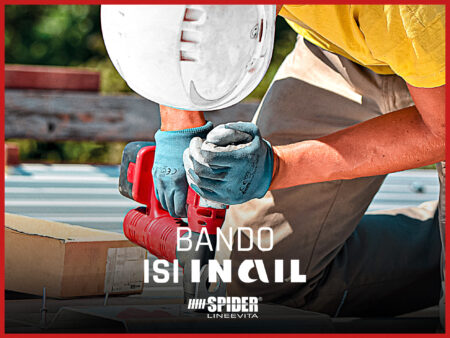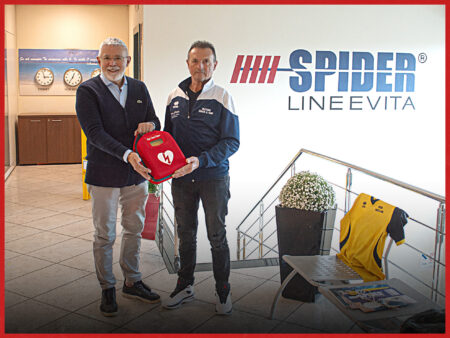
To protect the safety of the operators it is necessary to have the right knowledge of all the regulations relating to the life lines currently in force on the national and regional territory. In this article we find out when the lifeline is mandatory, how the obligation to make safety is regulated and what are the expected times for the maintenance of the lifelines.
Among the topics covered you can find:
The lifelines are safety devices, to be precise they are anti-fall anchoring devices. The latter are regulated by the European laws UNI EN 795: 2012 and UNI 11578: 2015, i.e. by standards that specify the performance, requirements and test methods of anchoring devices.
But let’s get to the point: when are life lines mandatory? According to the current regulations dedicated to work at height, the person in charge of safety is obliged to make the so-called “work at height” safe. By work at height we mean all those works or interventions in which work is carried out at a height equal to or greater than 2 meters with respect to a stable floor.
Life lines fall into the category of fall arrest devices and therefore are necessary for the safety of some work activities such as: assembly, maintenance, roofing work etc …
In Italy, there are laws for life lines and fall arrest devices on several levels, the best known are: national and regional.
National legislation
On the national territory, work at height is regulated by Art. 115 of Legislative Decree 81/2008 relating to “Fall protection systems from above”. The article indicates all the equipment and devices that are deemed necessary for the safety of workers carrying out activities at high altitudes, including life lines such as anchoring systems.
More specifically, the national legislation states that if collective security measures have not been adopted, it is mandatory to make them safe by means of suitable personal protective equipment and compliant with the technical standards established by the legislation.
Among the compliant safety devices it has the following:
The legislation also states that it is not strictly necessary that the devices must be used at the same time if it is not essential for safety.
Regional legislation
On the other hand, several regions have decided to raise awareness on the issue and have introduced the obligation to install life lines on high-altitude roofs and roofs. There are regional laws for the following regions:
In these regions, the mandatory nature of life lines has been introduced in certain situations and contexts. The regions listed above require the installation of life lines in all new buildings or for renovation / installation at high altitude.
Maintenance: how and when it is mandatory
The maintenance of life lines is a much discussed issue and of fundamental importance for guaranteeing the safety of workers and avoiding unpleasant penalties for the responsible party.
Typical questions we are usually asked are:
Why is it necessary to carry out periodic inspection?
There is an obligation of periodic inspection and maintenance on life lines for various reasons, in particular two of these are of fundamental importance:
1.To verify the correct functionality of the system: this check is aimed at checking that the structure has not suffered damage, tampering or hidden falls.
2.In order not to respond both civilly and criminally in the event of a fall: civil and criminal responsibilities are not to be underestimated when it comes to safety. For this reason, proper maintenance relieves the owner or the safety manager from any responsibility.
By whom can the maintenance of the life lines be carried out?
All types of life lines must be serviced by qualified personnel, installers and / or reference inspectors. According to the UNI 11560: 2014 regulation which regulates this practice, the personnel assigned to the revision must be made up of expert technicians who have been issued a certificate of suitability for maintenance.
Do your lifelines need an overhaul? Spider technicians are specialized in the maintenance of life lines for each sector.
What does maintenance include?
Spider maintenance includes all the necessary checks to ensure that the devices can continue to be used and that they can last over the years.
Inspections fall into three main categories:
1.Pre-assembly inspections: that is, all the checks necessary for verification and control to ensure that the anchoring surface is suitable for the lifeline.
2.Inspections prior to use of the device: following assembly, it is necessary to inspect the device to verify that it is safe.
3.Periodic inspections: periodic checks to allow the continuous use of the fall arrester in total safety over the years.
The checks carried out include checks on all components of the life line:
How often do reviews need to be performed?
Each lifeline or anchoring system must be inspected at regular intervals (generally annually) recommended by the manufacturer of the devices themselves. In any case, the technical standards prescribe By law, it is however mandatory that the interval between two inspections does not exceed 2 years for checks on the anchoring system and 4 years for checks on the support structure and anchors.
Do you need more information?
 Agevolazioni
Agevolazioni  Events
Events